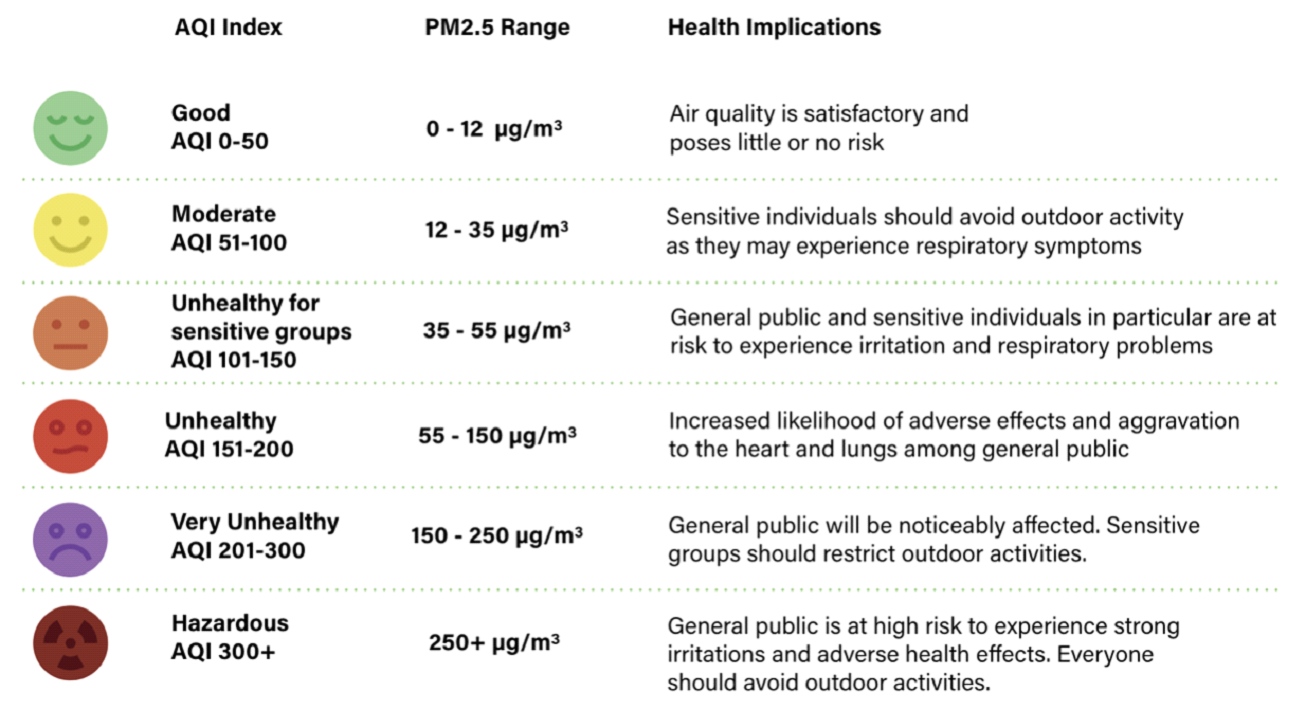LEARN / ARTICLE
What is Air Quality Index (AQI)?
The Air Quality Index (AQI) is an index that indicates how clean or polluted the air in a certain location is. AQI is a global measurement method that starts at 0 at the low end and goes above 300 on the high end. A higher AQI means a higher level of air pollution and a worse impact on our health.
Some countries refer to this measurement as the US AQI to avoid confusion with other air quality measurements.
The AQI is divided into six categories with different colors. Each category represents a different level of health concern, and the colors make it easy for people to quickly determine the quality of air in their area. An AQI value at or below 100 is generally considered to be satisfactory.
The AQI scale is as follows:

AQI scores takes into account 6 major pollutants
AQI scores are calculated based on a complex calculation that essentially divides the concentrations of six major air pollutants (ground-level ozone, PM10, PM2.5, carbon monoxide, sulphur dioxide, and nitrogen dioxide) by the permissible standards. Some countries also measure visibility (smoke) as part of the AQI.
AQI scores vary throughout the day
AQI scores can change significantly within the course of a day. For example, a city’s AQI may be higher in the morning and the late afternoon when people are travelling to and from work. Wind can both increase and decrease an AQI: if the wind brings in smoke from a wildfire, the AQI will worsen, but if it brings in fresh clean air such as from the ocean, the AQI will improve.
Air quality data like the AQI helps us better understand the condition of the air we breathe and when it is safe to do certain activities outdoors, especially for vulnerable groups like pregnant women, children, and the elderly. Data also helps governments and experts develop policies to improve the quality of our air.